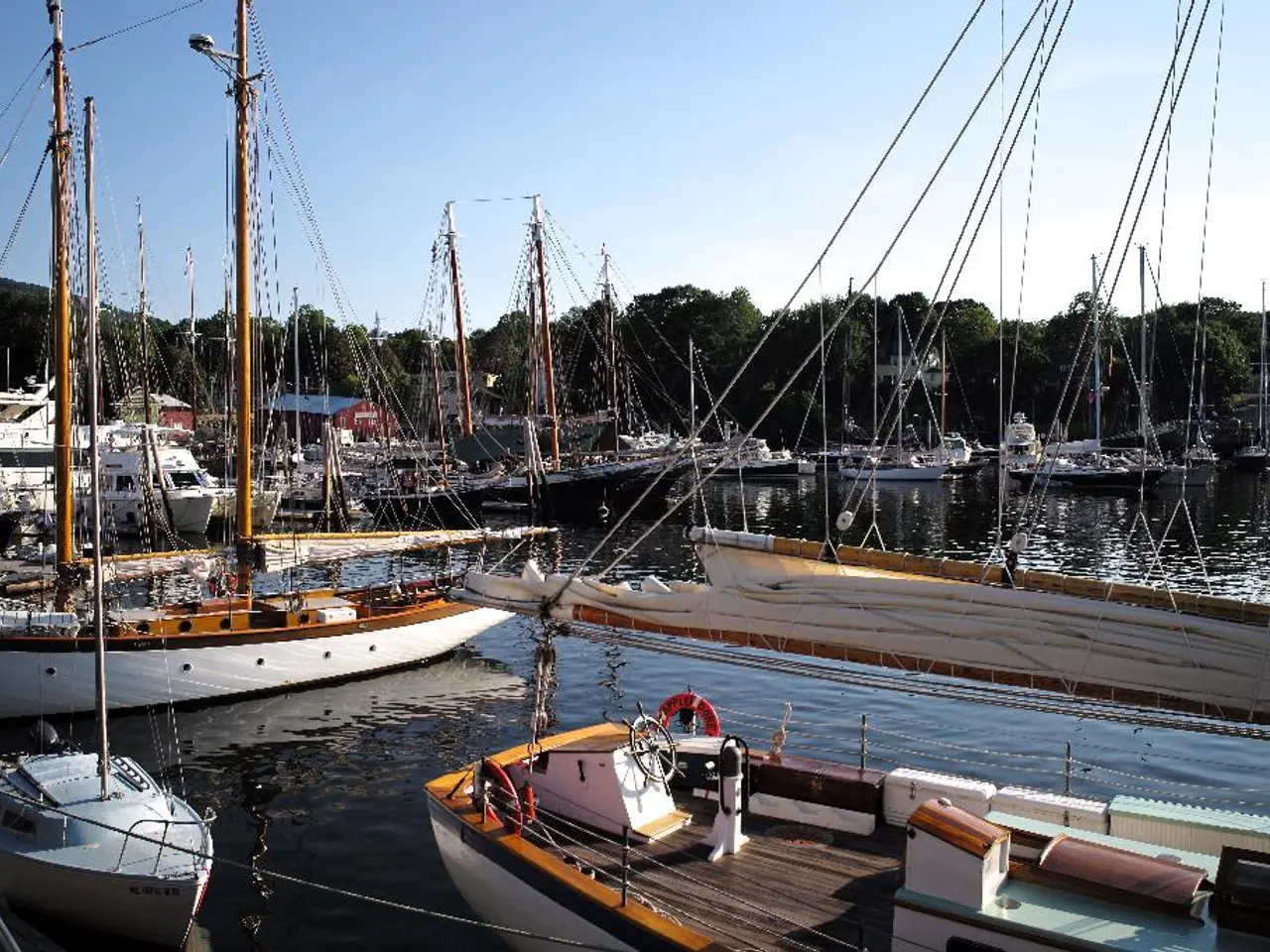Title: The Indispensable Role of Undersea Cables in Global Connectivity and the Need for Protection
Submarine cables form the hidden foundation for the worldwide web network
Undersea cables, often referred to as the backbone of global communications, play a pivotal role in transmitting over 95-99% of international data traffic. These fiber-optic cables, laid on the ocean floor, connect continents and support high-speed internet, international phone calls, financial transactions, and cloud services that power the modern economy.
Robin Chataut, an Assistant Professor of Cybersecurity and Computer Science at Quinnipiac University, underscores the importance of these cables. Wavelength Division Multiplexing (WDM) technology, which allows multiple wavelengths of light to be sent simultaneously, is a key factor in these cables, increasing data capacity and ensuring efficient transmission over long distances.
Undersea cables offer several benefits. They facilitate massive data transmission, from social media posts to large corporate data exchanges. Their low latency communication is crucial for real-time applications like video conferencing and online gaming. Moreover, these cables are designed to be highly reliable, with built-in redundancy.
However, undersea cables are not without their challenges. They face several threats that could disrupt global connectivity. Cybersecurity threats, physical damage due to natural disasters, human error, or geopolitical conflicts, and environmental factors all pose potential risks.
To mitigate these threats, several protective measures are employed. Advanced encryption, regular maintenance, international cooperation, and technological advancements are all crucial in ensuring the continuous operation of undersea cables. In the event of cable compromises, satellite operators can use their networks to reroute internet traffic.
Experts have proposed establishing "cable protection zones" to limit high-risk activities near cables. Some have also suggested amending international laws around undersea cables to deter foreign sabotage and developing treaties that would make such interference illegal.
The potential for sabotage, particularly by nation-states, is a growing concern. In 2024, unexplained failures in multiple cables off the coast of West Africa led to significant internet disruptions affecting at least 10 nations.
The process of laying undersea cables starts with thorough seabed surveys to chart a map in order to avoid natural hazards and minimize environmental impact. Each undersea cable contains multiple optical fibers, thin strands of glass or plastic that use light signals to carry vast amounts of data over long distances with minimal loss.
Undersea cables are constructed with sturdy materials, including steel armor, to withstand harsh ocean conditions and accidental impacts. Strategic route planning for undersea cables includes avoiding known hazards and areas of geopolitical tension.
In conclusion, undersea cables are indispensable for maintaining global connectivity and supporting economic activities worldwide. A blended approach that uses both undersea cables and satellites could provide a measure of protection against cable cuts. The continuous development of technologies and international cooperation are essential to ensure the security and reliability of these vital communications infrastructure.
- As the telecommunications sector advances with the growth of commercial space, the role of satellites in complementing undersea cables for data transmission could offer additional resilience against cable cuts, thereby improving the space economy.
- The increasing reliance on data-and-cloud-computing for various industries, including financial transactions and online services, requires a more robust and secure infrastructure, making it necessary to reinvest in space exploration and the development of advanced technology for satellite deployment.
- Considering the potential threats to undersea cables from geopolitical conflicts, nation-states may invest in military spy satellites to monitor cable protection zones and prevent sabotage attacks on cables, thus maintaining global telecommunications security.




